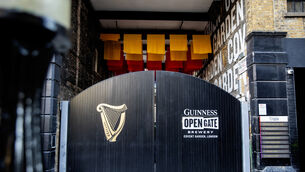Profits near double to €1.1m at builders Ward & Burke
Accounts just filed with the Companies Office show the firm increased its profits by 93% from €614,946 to €1.18m in the 12 months to the end of Dec 2011.
The Kilcolgan-based company increased its profits after revenues increased by 8% from €41.7m to €44.3m.
General construction work and civil engineering are the main activities of Ward & Burke Construction, and its accumulated profits stood at €10.7m at the end of December. Numbers employed by the company last year decreased from 136 to 123.
The figures show the company’s revenues in the Republic of Ireland decreased from €37.8m to €29.8m while the company recorded a three fold increase in its British revenues going from €3.8m to €13.7m.
The firm last year also recorded revenues in Canada for the first time generating €743,995.
The figures show the company recorded an operating profit of €1.24m with interest payable reducing the company’s profits by €62,897 to €1.18m
The accounts show that remuneration for the firm’s nine directors, including pension costs, last year increased from €1.31m to €1.97m.
The company’s administrative expenses last year increased from €2.1m to €2.6m, with other operating expenses decreasing from €621,818 to €568,684.
The company’s staff costs last year decreased from €6.6m to €5.7m, with 106 involved in construction, 14 in administration and three in management.
Ward & Burke Construction is owed over €12m by group companies. The firm’s cash at bank last year increased from €1.5m to €1.7m.
According to the directors’ report: “The company is exposed to general economic conditions in Ireland. It is dependent on strong capital investment by both the public and private sectors.
“The company pro-actively tenders for contracts and is trying to stay ahead of the competition.
“The company’s policy is to ensure that sufficient resources are available in cash to meet all obligations when they fall due.
“The company’s activities in Britain are conducted primarily in sterling and this results in low levels of currency transaction risk.”















